It's been a while since I last wrote anything other than a community post. I've had lots going on, so there are plenty of things I'd love to put down in writing, but no time to actually do so. The weekend is here again and I'm determined to get through some of this growing pile of sewing repairs, so I'm attempting to combine it with writing and curating. It's not very effective, though.
Recently I was lucky to witness a process of nature in the garden that I'd never seen before. I've seen the results of it plenty of times, but never the actual process leading up to it, so I called on my daughter to photograph it for me. It's a bit of a gruesome process, but fascinating nonetheless and beneficial to the garden.
As usual the broccoli plant has become the laying ground for cabbage white butterflies and I noticed the gaping holes in its leaves, so began to look underneath them for the familiar green caterpillars my chooks enjoy. My first find was a small one, but the second leaf I lifted gave me quite the surprise!
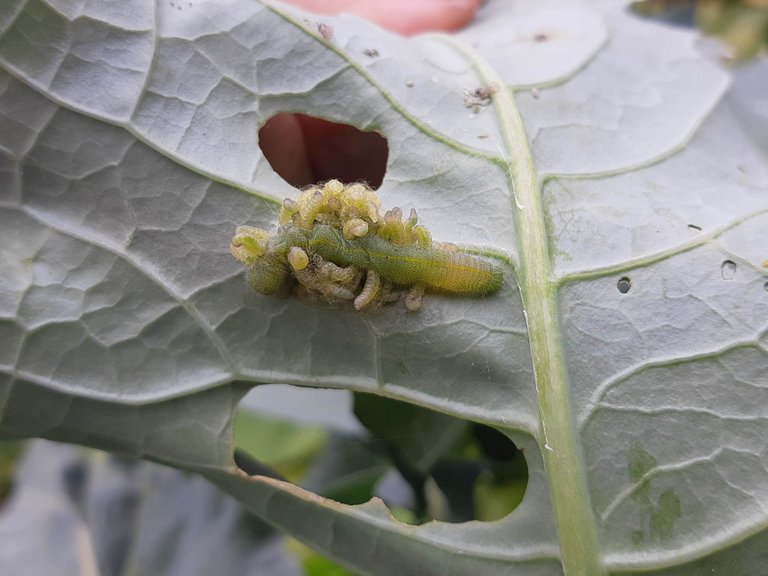
I found another caterpillar, but a parasitic wasp had beaten me to it and I was greeted by this wriggling mass. Over the next hour or two they spun their webbing and quickly moved onto their cocoon phase, culminating in the little, fluffy, yellow cluster that I usually discover.
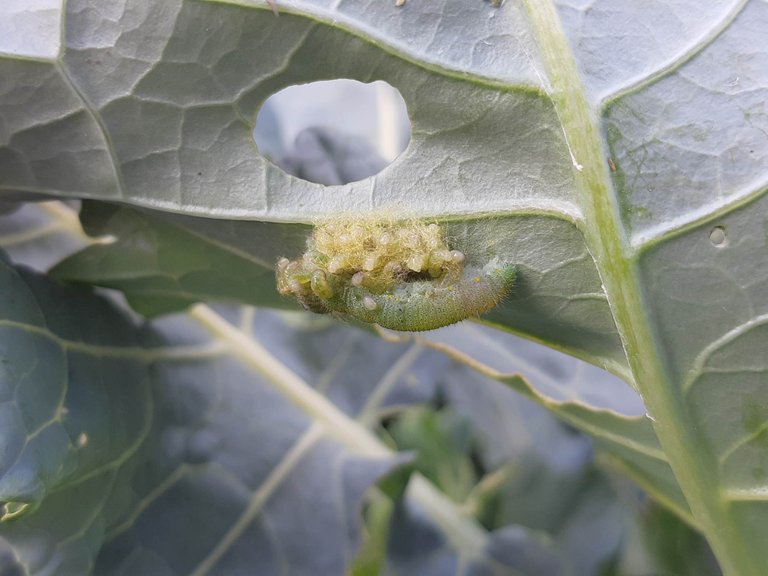
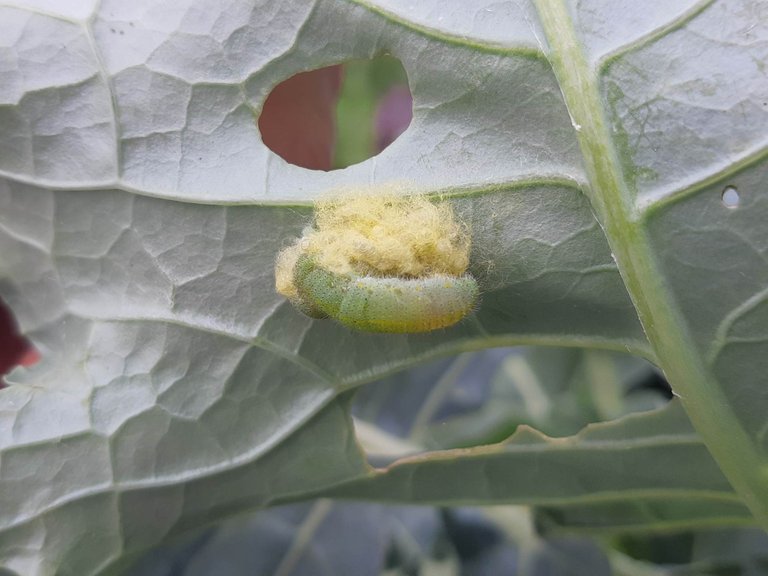
A few days later and no sign of the caterpillar was to be seen. It also looks like the wasps had already emerged. Imagine if I could have seen that process too!
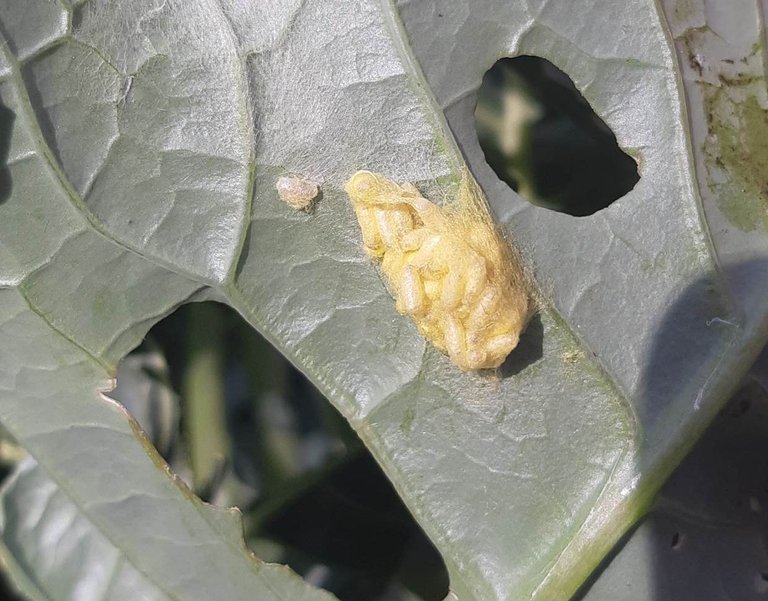
While I'm sure my chickens would just as happily eat these grubs as any other, I like to encourage them to live and breed, because they are nature's way of keeping things in balance. With me having even less time than usual for the garden, letting nature keep things in check is more important than ever. The more of these parasitic wasps around the better the cabbage white population will be kept in check. They really haven't been as problematic as they used to be before I started seeing those yellow cocoon clusters.
You may have noticed that higher up on the leaf in the first photo there is a little group of another type of pest that loves a lot of edible plants in the garden. Even though they are tiny, aphids also have a parasitic wasp that predates them. While they may not eat away the leaves like caterpillars do, in large numbers they can cause real damage to a plant.
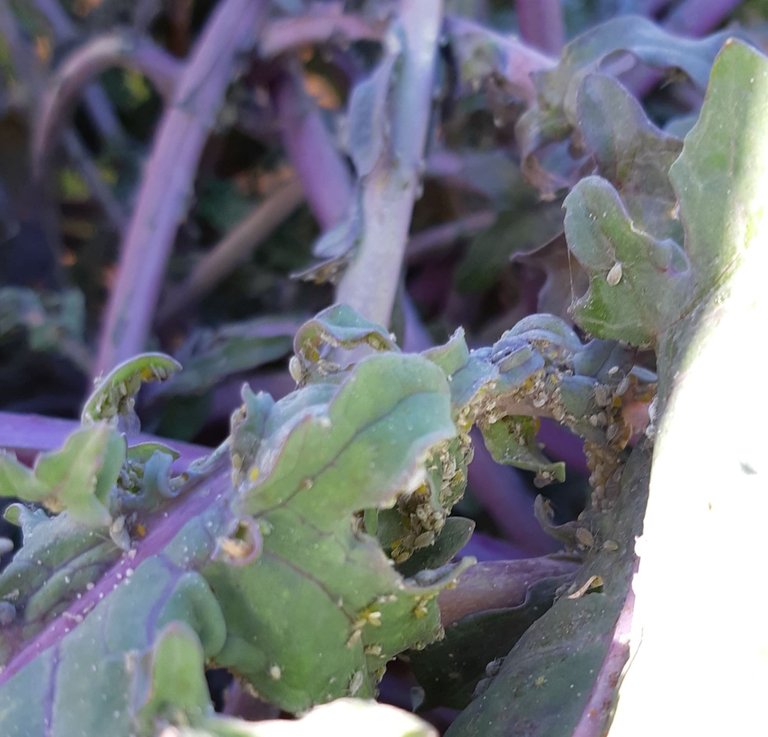
They are known as sap-suckers and they damage the plant by feeding on the liquid nutrients as they are transported through the leaves. When there are only a few of them the plant won't necessarily show any signs of distress, but when I see curling and misshapen leaves it's a sure sign that there is a bad infestation.
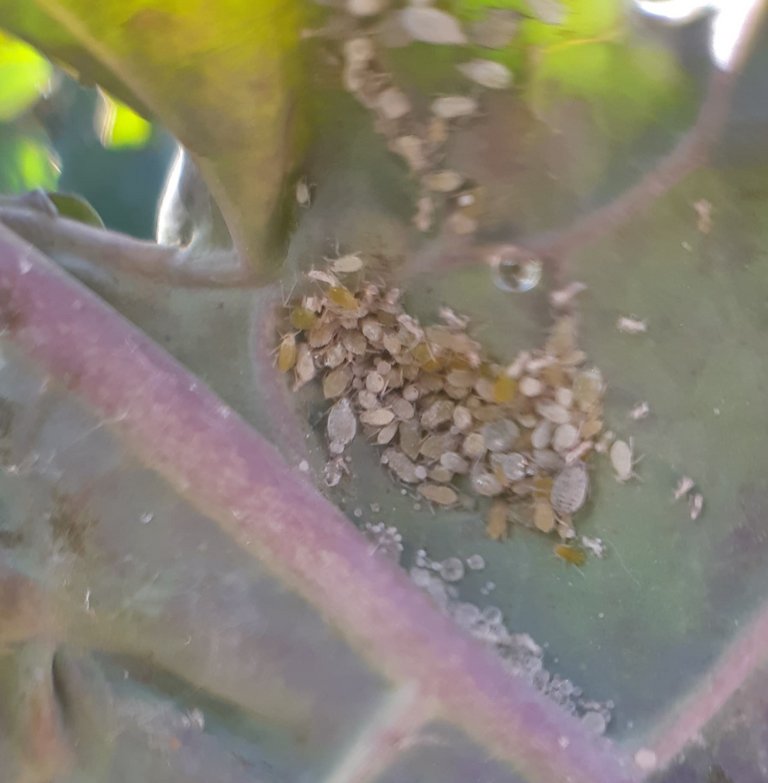
When I get a bad infestation I'll hose the aphids off the plant, then check periodically until I see either ladybirds, ladybird larvae or signs a parasitic wasp had paid them a visit. Happily I haven't even need to hose those in the top photo off, because they have already been paid a visit since this photo was taken.

So how can you tell if the wasp has stopped by? See the photo above. Can you see how five of them are like fat little balls and all but one have gone brown? That's the baby wasp growing inside of them. Soon they will be empty round husks with a tiny hole where the wasp emerged.
So there we have it. Nature's brutal, but intriguing pest control. If you spray pesticides you won't get this happening, because pesticides don't discriminate and will kill the predators too. This actually ends up compounding pest issues, because they will develop a resistance to the pesticides, but it's way harder for the predators to bounce back from population decimation.



 You've been curated by
You've been curated by 
